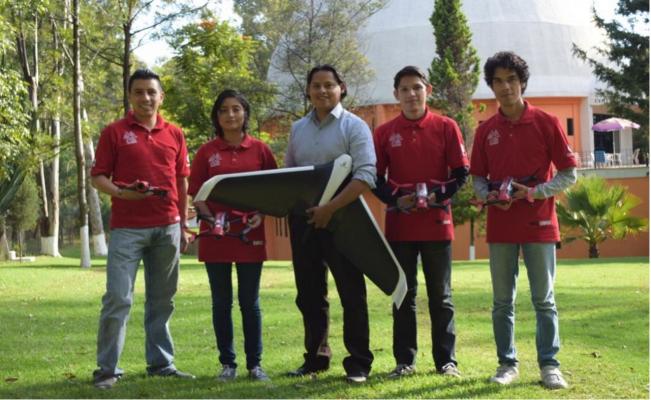A Mexican air robotics project won second place in China in which competitors had to carry out a series of activities while simulating an explosion and fire at an offshore drilling rig.
The “Ráfaga” air robotics project launched by the National Institute of Astrophysics, Optics and Electronics (INAOE) won second place during an international competition held in China.
José Martínez Carranza, the project’s leader and researcher at INAOE, said that artificial intelligence, robotics and computerized vision are three of the lines of research for the scientific project, with the purpose of developing micro air vehicles that are completely autonomous.
“This project was financed by the UK’s Newton Fund. The aim of the project is to develop drones that are capable of autonomous flight and can fly in the event of a failure in GPS systems and can make intelligent choices,” said Martínez Carranza in a press release.
The QuetzalCuauhtli team of the INAOE competed in the International Micro Air Conference and Competition that was held three weeks ago at the Beijing Institute of Technology.
The Mexican team placed second place in the interior drones category.
The competition consisted of competitors completing a series of activities while simulating an accident at an oil platform, which was on fire after an explosion.
The idea was to send a brigade of drones to carry out several activities: arrive at the point of disaster and survey the damage, create a map of the area, locate people who may have jumped into the ocean, identify them and locate life vests.
One of the drones had to lower itself down to the ocean and take a sample of water and others had to enter the platform’s building, locate objects with dangerous material, get a hold of them, place them in safety containers and successfully exit the building.
In addition to all of those activities, the drones had to take off and land on a moving platform.
Doctor José Martínez Carranza also said that the “Ráfaga” project was launched in March 2015 and finishes in February 2017, so participating in this competition was very important for his team so they could put into practice the systems they have been developing over the last 2 years.
“Our participation in the competition has to do with the development of an entire communications infrastructure with the drones. The idea is to create drones that fly automatically, process visual information using the cameras they have on board and carry out intelligent activities,” he concluded.
Source: www.eluniversal.com.mx



